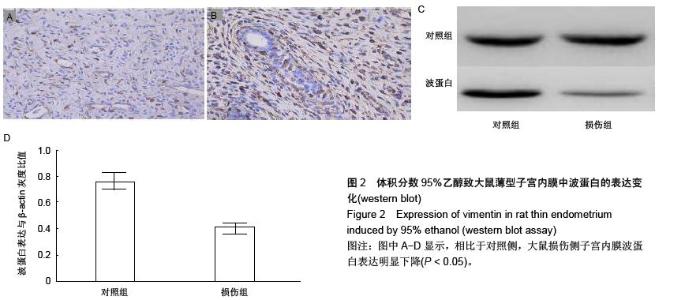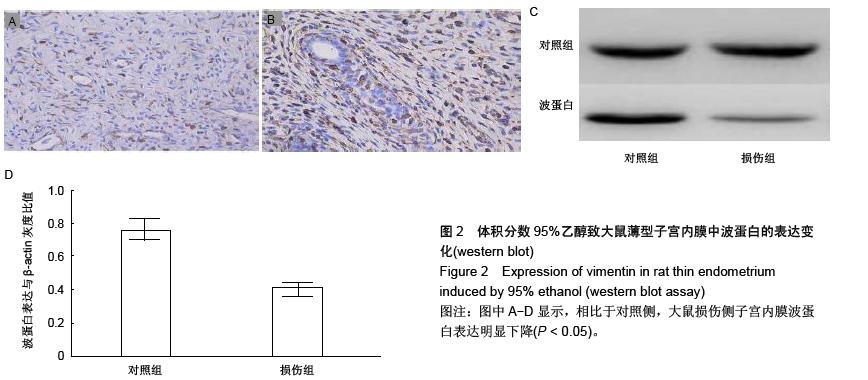| [1] Chang Y, Li J, Chen Y, et al. Autologous platelet-rich plasma promotes endometrial growth and improves pregnancy outcome during in vitro fertilization. Int J Clin Exp Med. 2015; 8(1):1286-1290. [2] Riad ON, Hak AA. Assessment of endometrial receptivity using Doppler ultrasonography in infertile women undergoing intrauterine insemination. Gynecol Endocrinol. 2014;30(1):70-73. [3] Kasius A, Smit JG, Torrance HL, et al. Endometrial thickness and pregnancy rates after IVF: a systematic review and meta-analysis. Hum Reprod Update. 2014;20(4):530-541.[4] 黎雪茹,王中海.薄型子宫内膜的研究进展[J].中华妇幼临床医学杂志:电子版, 2015,11(1):113-116.[5] 阙海丹.薄型子宫内膜的临床特点及诊治分析[J].基层医学论坛, 2015,(20):2788-2789.[6] 魏丽坤,张雷,王蔼明,等.子宫内膜微创术对薄型子宫内膜容受性的影响[J].山东医药,2015,(25):66-68.[7] 关少艮.薄型子宫内膜30例临床分析[J].中国实用医药, 2013, 8(3):49-50.[8] 郭欢欢,孙蓬明,林元.薄型子宫内膜的临床处理进展[J].国际妇产科学杂志,2015,(4):417-420.[9] 金丹,朱亮.薄型子宫内膜的评价与改善措施[J].生殖与避孕, 2012,32(1):49-53.[10] Davar R, Dehghani Firouzabadi R, Chaman Ara K. Dilatation and curettage effect on the endometrial thickness. Iran Red Crescent Med J. 2013;15(4):350-355.[11] Gonzalez Gonzalez NL, Gonzalez Davila E, Castro A, et al. Effect of pregestational diabetes mellitus on first trimester placental characteristics: three-dimensional placental volume and power Doppler indices. Placenta. 2014;35(3): 147-151.[12] Talukdar N, Bentov Y, Chang PT, et al. Effect of long-term combined oral contraceptive pill use on endometrial thickness. Obstet Gynecol. 2012;120(2 Pt 1):348-354.[13] Satirapod C, Wingprawat S, Jultanmas R, et al. Effect of estradiol valerate on endometrium thickness during clomiphene citrate-stimulated ovulation. J Obstet Gynaecol Res. 2014;40(1):96-101.[14] Zhao M, Chang C, Liu Z, et al. Treatment with low-dose aspirin increased the level LIF and integrin β3 expression in mice during the implantation window. Placenta. 2010;31(12): 1101-1105.[15] Eftekhar M, Sayadi M, Arabjahvani F. Transvaginal perfusion of G-CSF for infertile women with thin endometrium in frozen ET program: A non-randomized clinical trial. Iran J Reprod Med. 2014;12(10):661-666.[16] Kunicki M, ?ukaszuk K, Woclawek-Potocka I, et al. Evaluation of granulocyte colony-stimulating factor effects on treatment-resistant thin endometrium in women undergoing in vitro fertilization. Biomed Res Int. 2014;2014:913235.[17] 哈灵侠,袁莹莹,裴利国,等.粒细胞集落刺激因子宫腔灌注在改善薄型子宫内膜中的应用价值[J].中国妇幼保健,2015,30(1): 82-85.[18] 赵诗艺,刘英,杨晓葵,等.薄型子宫内膜冻融胚胎移植周期中应用雌二醇/雌二醇地屈孕酮的疗效观察[J].实用妇产科杂志,2015, 31(4):270-273.[19] 雷福珍.宫腔内灌注粒细胞集落刺激因子治疗薄型子宫内膜的临床观察[J].当代医学,2015,21(23):28-29.[20] 程龙凤,王蔼明,赵勇.粒细胞集落刺激因子与子宫内膜修复的研究进展[J].生殖医学杂志,2015,24(4):334-337.[21] 孙旸,梁婧,兰晓霞,等.改善子宫内膜发育不良的药物治疗[J].国际生殖健康/计划生育杂志,2015,34(3):251-255.[22] 史红珍,林琳,孙立娟,等.不同雌激素对薄型子宫内膜患者子宫内膜容受性的影响[J].山西医药杂志,2015,(9):1050-1052.[23] 张秦溪,杜伯涛,苗瑞超,等.经阴道补充雌激素对促排卵期薄型子宫内膜的影响[J].生殖与避孕,2014,34(4):287-291.[24] Guney M, Oral B, Karahan N, et al. Protective effect of caffeic acid phenethyl ester (CAPE) on fluoride-induced oxidative stress and apoptosis in rat endometrium. Environ Toxicol Pharmacol. 2007;24(2):86-91.[25] Guney M, Ozguner F, Oral B, et al. 900 MHz radiofrequency-induced histopathologic changes and oxidative stress in rat endometrium: protection by vitamins E and C. Toxicol Ind Health. 2007;23(7):411-420.[26] 路平,赵潇丹,郝玉娟,等.小鼠骨髓间充质干细胞在子宫内膜损伤小鼠子宫内膜中的定位[J].郑州大学学报(医学版),2015,(1): 101-104.[27] Jing Z, Qiong Z, Yonggang W, et al. Rat bone marrow mesenchymal stem cells improve regeneration of thin endometrium in rat. Fertil Steril. 2014;101(2):587-594.[28] Ogrodnik M, Salmonowicz H, Brown R, et al. Dynamic JUNQ inclusion bodies are asymmetrically inherited in mammalian cell lines through the asymmetric partitioning of vimentin. Proc Natl Acad Sci U S A. 2014;111(22):8049-8054.[29] 廖丹,邓亚丽,禹正扬,等.子宫内膜癌血管生成拟态与VEGF、COX-2表达的意义[J].临床和实验医学杂志,2015,(17): 1418-1420.[30] 薛兰芳,刘阳.Ang-2、VEGF与血管生成的关系及其在卵巢子宫内膜异位症中表达的意义[J].中国医药前沿,2013,(3):5-6.[31] Alawadhi F, Du H, Cakmak H, et al. Bone Marrow-Derived Stem Cell (BMDSC) transplantation improves fertility in a murine model of Asherman's syndrome. PLoS One. 2014;9(5): e96662.[32] 陈思怀,朱周福,李小兰.氟化物对体外培养孕鼠子宫内膜上皮细胞的影响[J].环境与健康杂志,2008,25(5):414-418.[33] 曲军英,吕一帆,林茵,等.建立小鼠子宫内膜损伤模型的研究[J].福建医科大学学报,2011,45(1):34-37.[34] 王改,贺斌,徐祥波,等.子宫内膜损伤与宫腔粘连动物模型的研究进展[J].生殖医学杂志,2014,23(10):856-859.[35] 高红,赵静,李艳萍.大鼠薄型子宫内膜模型的建立和鉴定[J].生命科学研究,2011,15(5):426-431.[36] 刘芳,何援利.机械和感染双重损伤法建立新西兰大白兔宫腔粘连模型[J].重庆医学,2013,(7):765-767. |



